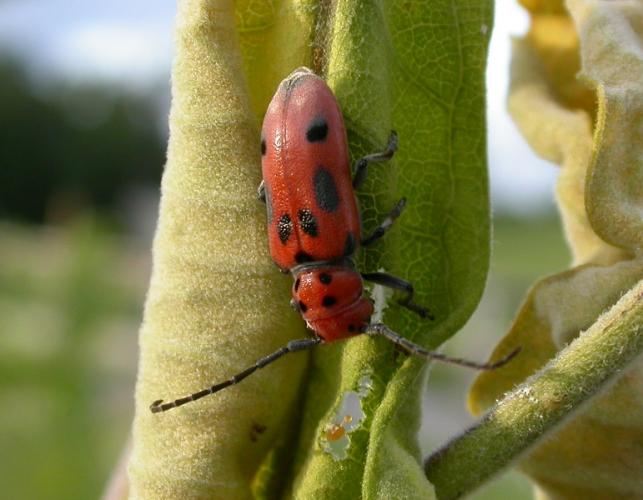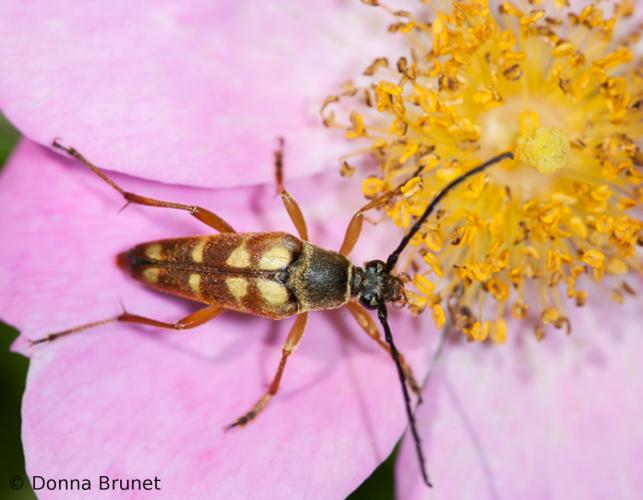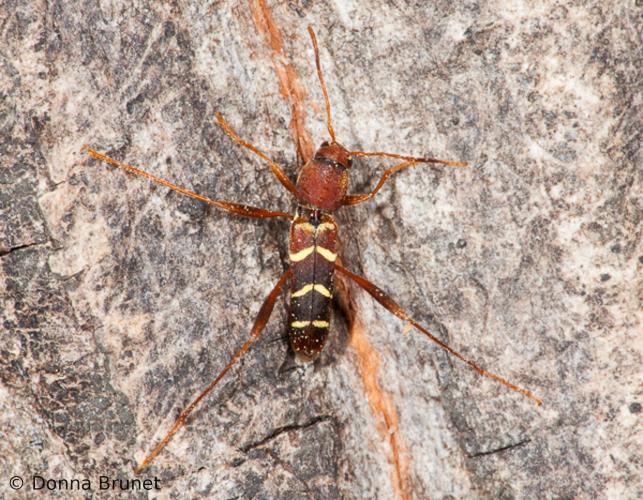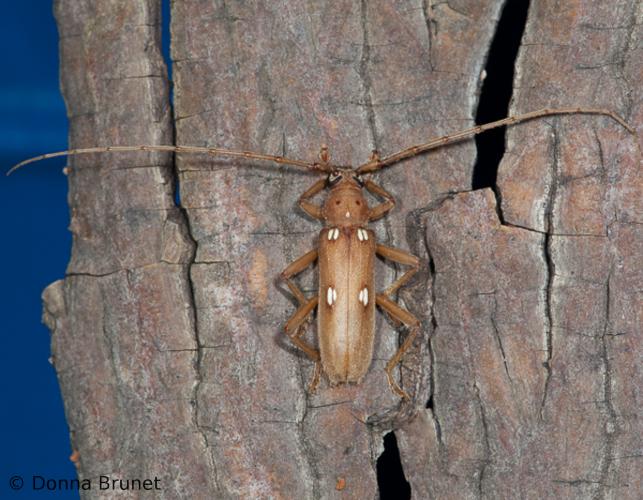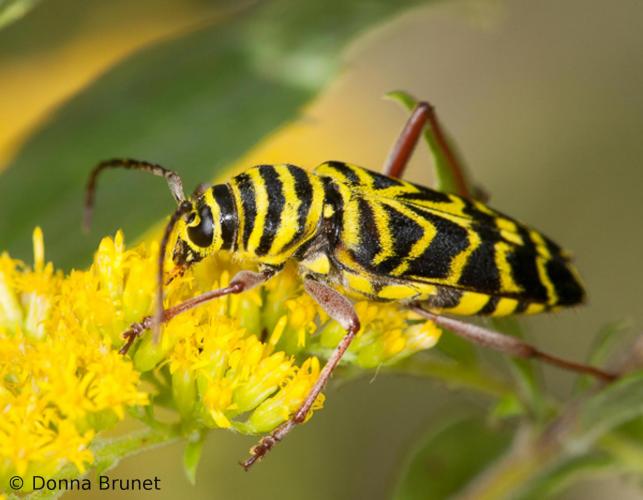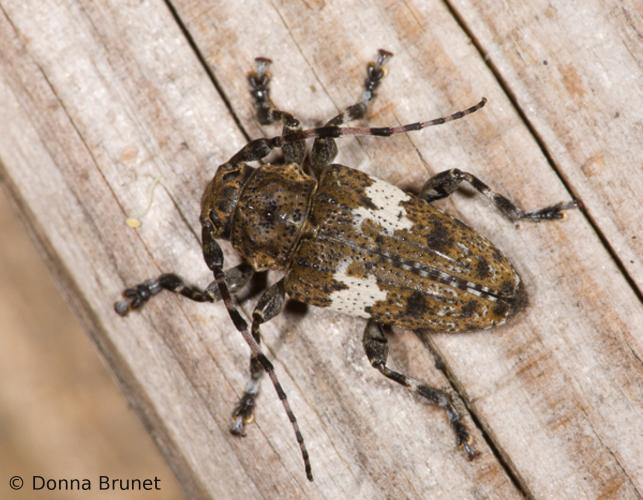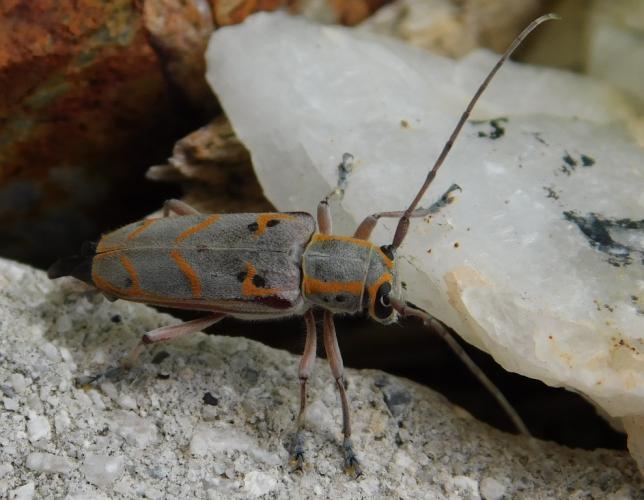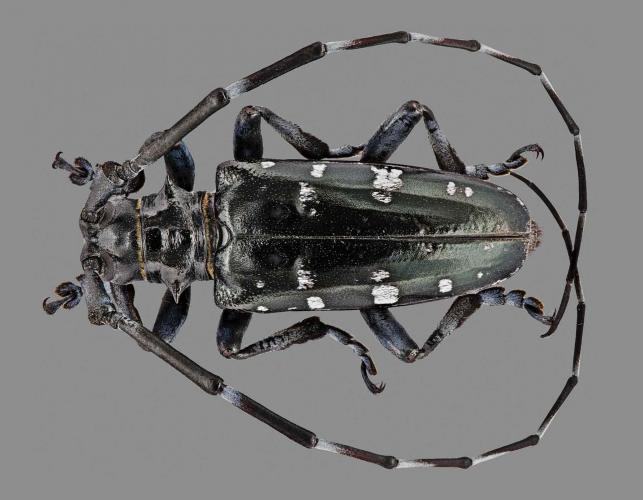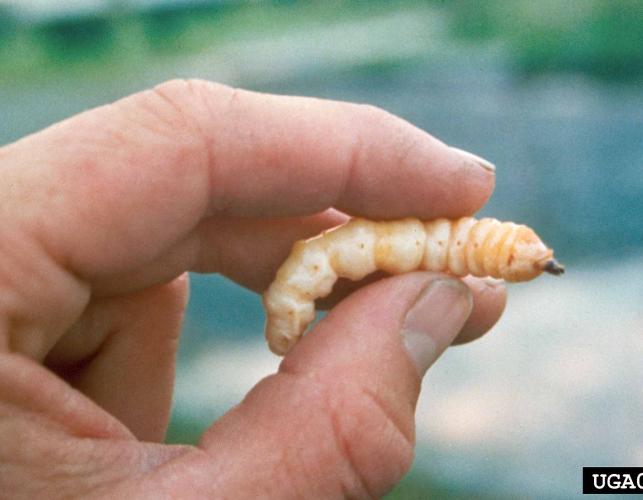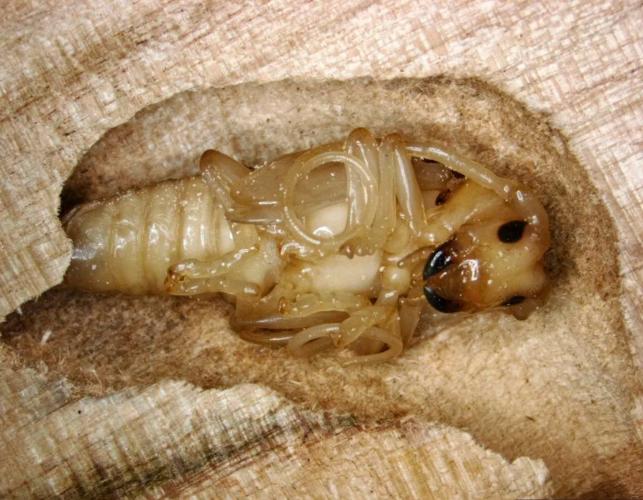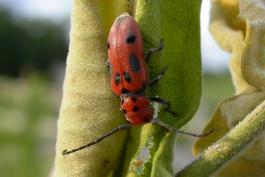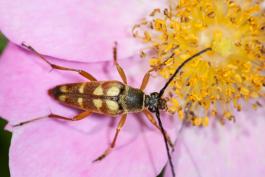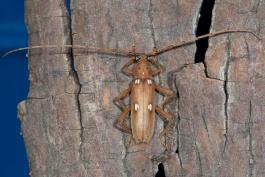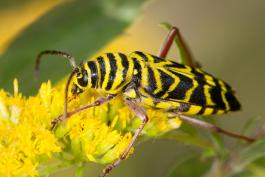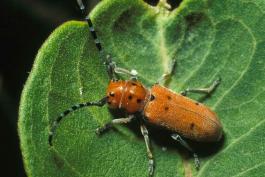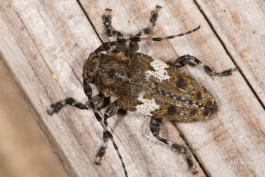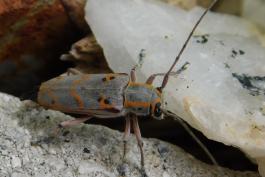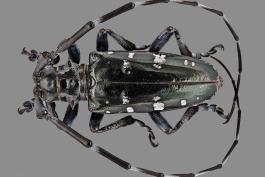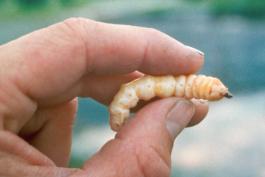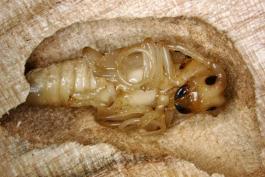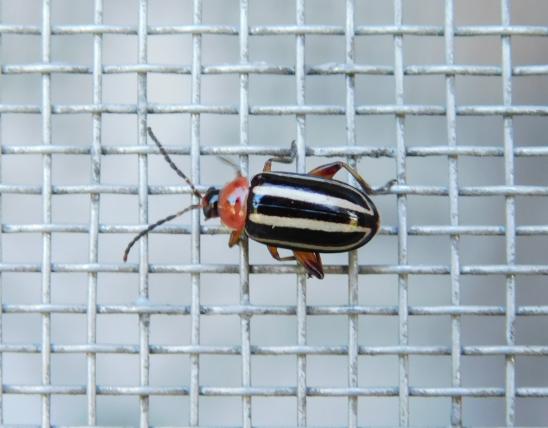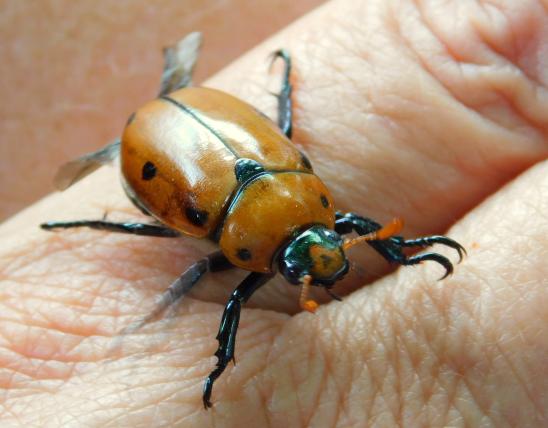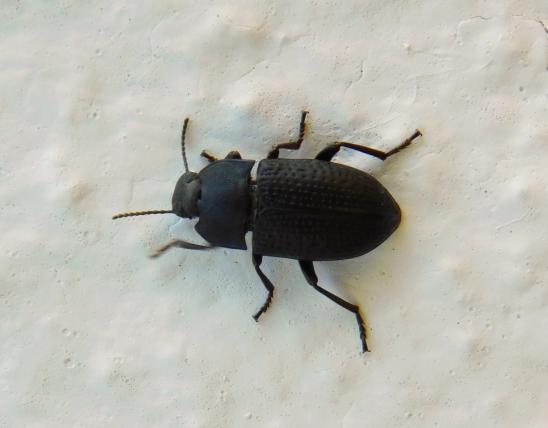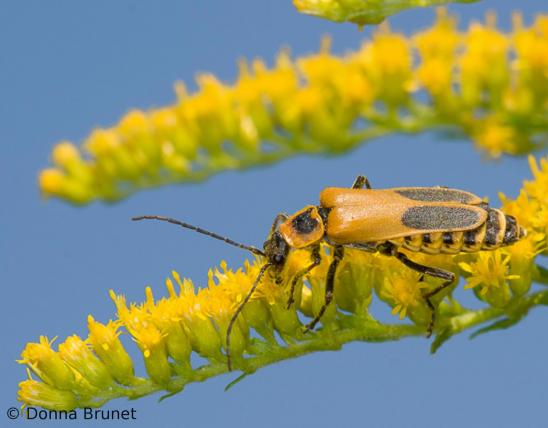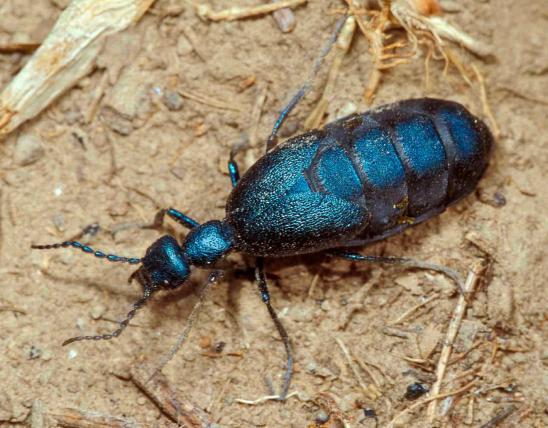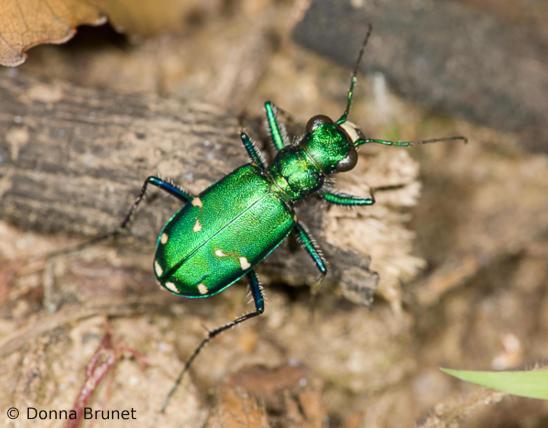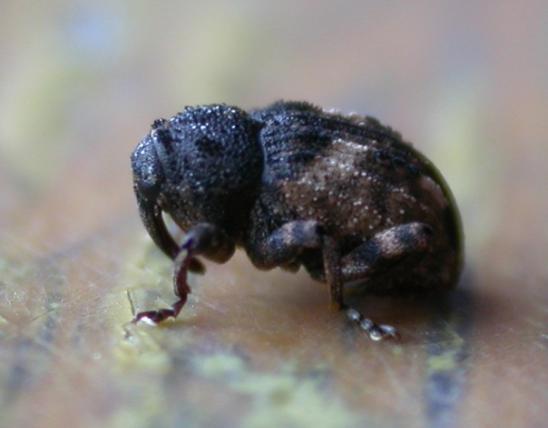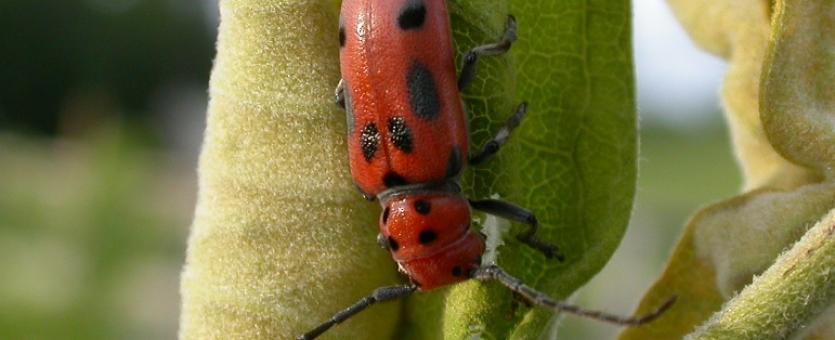
Longhorned beetles are elongated and cylindrical, with antennae that are at least half the length of the body — sometimes much longer. There are many different species in this family. Often they are smooth, streamlined, and taper toward the back. Many are drab black, gray, or brown, while others mimic wasps with banded patterns of black and yellow or orange or have other colors.
The larvae are pale and grublike and are found inside wood or other plants.
Length: from ⅛ to 2½ inches; many are about ½ inch (varies with species; does not include appendages).
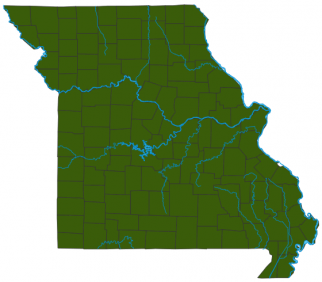
Statewide.
Habitat and Conservation
Each species of this large and diverse group of beetles is usually found near its special type of host tree, host plant, or dead wood. Since most adults can fly, they may be found almost anywhere. Some are attracted to lights. Adults of some types eat flowers and can be found on goldenrods or other plants. The larvae are usually found in dead, sick, or living trees. Some feed under the bark, where a tree’s vascular tissues are concentrated. Others bore deep into the trunk or roots.
Food
The larvae of most species eat wood, living inside their tree. Most bore into dead, dying, or rotting wood, but others target living trees. Some of the latter are called girdlers, for they tunnel just under the bark of limbs, severing (girdling) the limb’s vascular system and killing the limb, whose dying tissues they feed on. Other species live in soil and eat roots. Adults eat various foods, including flowers, leaves, bark, fungi, and sap. Some adults only take water.
Status
Common. They are economically important for the damage they cause to untreated wood products. Some species damage orchard, ornamental, or landscaping trees or other plants. The exotic, invasive Asian longhorned beetle is present in some parts of North America and could arrive in Missouri at any time. It could destroy millions of acres of hardwoods, including maples, elms, willows, and birches.
Life Cycle
Lifespans range from a few months to decades, but most live 1–3 years. After mating, females seek out the appropriate food plant, usually a tree, in the appropriate stage of life, sickness, or decomposition, and deposit eggs into the wood. The larvae hatch and burrow into the tree, eating it and making tunnels in the process. Most of the longhorn’s life is spent in the larval stages. After pupating, adult beetles chew their way out of the wood and seek mates to continue the cycle.
Human Connections
Although some species can damage living trees, our native longhorned beetles have a valuable place in the balance of nature. Humans, however, have imported exotic species that pose great danger to our forests. Never transport firewood. Learn to identify and report the presence of invasive species.
Ecosystem Connections
Apart from the grave problem of exotic invasive beetles, our native longhorns are an important part of forest ecosystems. Their burrowing into dead or dying wood helps recycle nutrients into the soil. Also, wood-chewing insects have, over great periods of time, caused trees to be strong and resistant to such onslaught.
